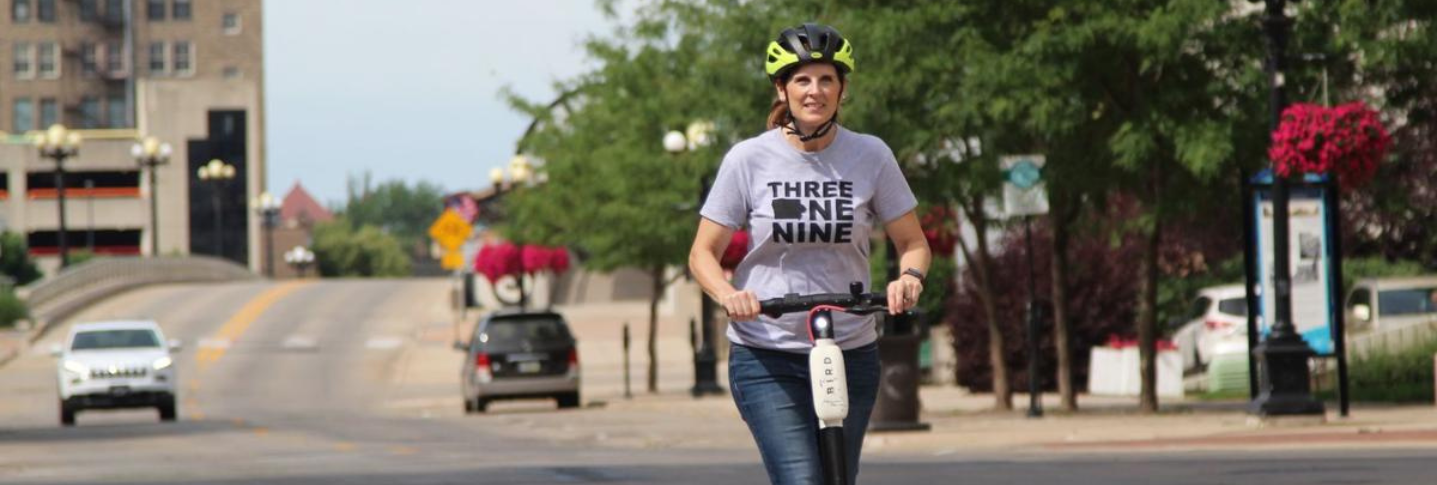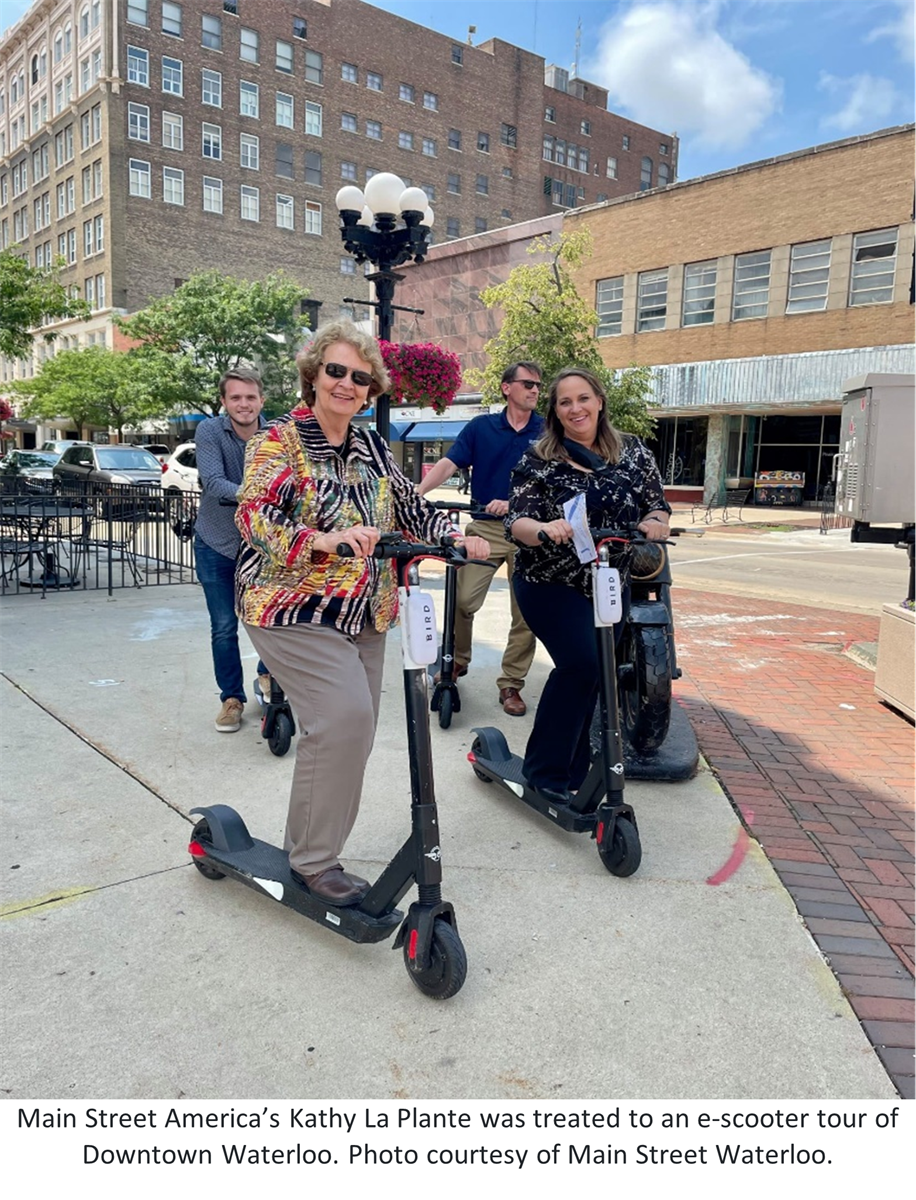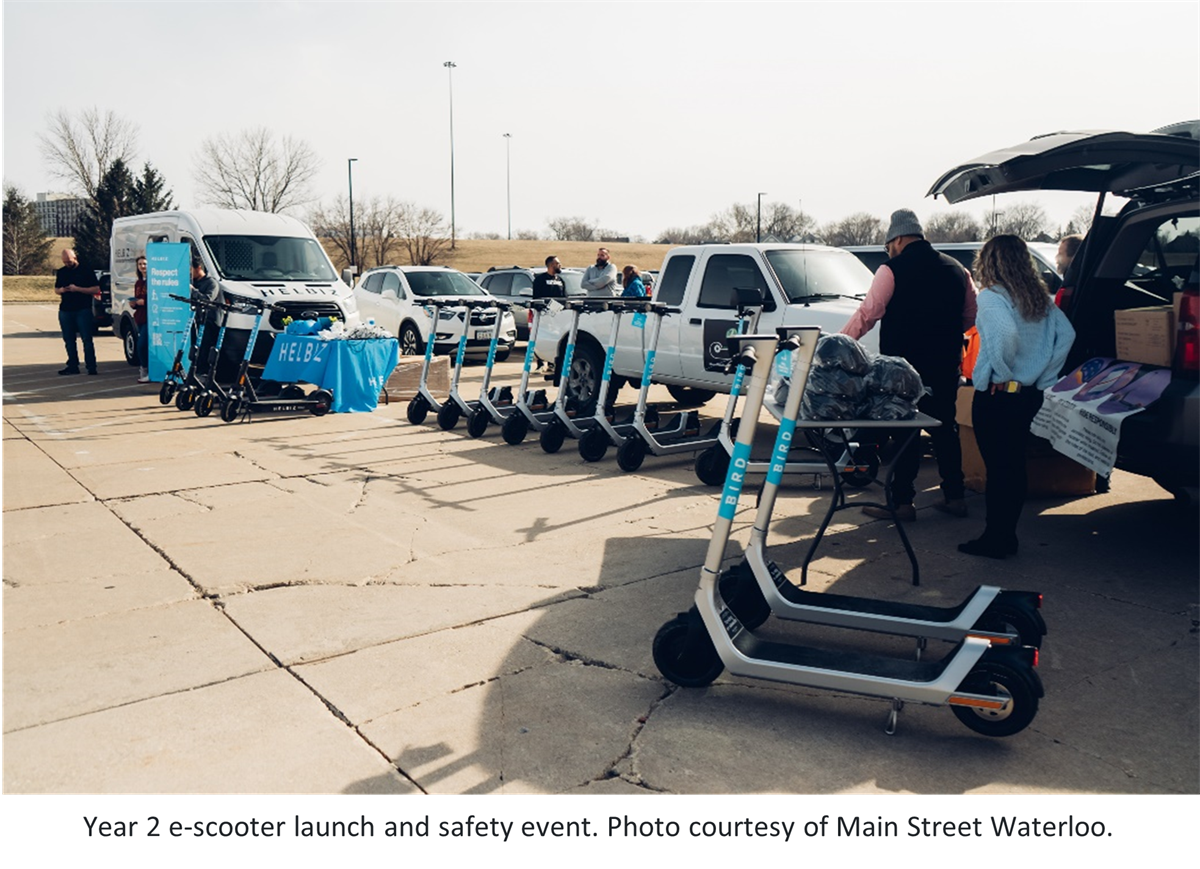Main Spotlight: Connecting, Innovating, and Sustaining a Healthy Main Street Movement
Key takeaways from six sessions at the 2025 Main Street Now Conference.

Implementing an e-scooter project requires community involvement, careful marketing, and strong organization.
.png)
The topic of shared e-scooters is often associated with narratives that focus on the negative aspects of a shared scooter program. Concerns about clutter, safety hazards, and rider negligence come to the forefront of many conversations. How do you flip the conversation and implement a successful e-scooter program in your community?

Waterloo is a community located in Iowa with a population of approximately 67,000 people. Not a big city, but not a small community. Residents struggle with wanting amenities and features of a big city, but feeling we are not big enough to justify having them. Our downtown spans approximately seventy blocks and has a river running through the middle. There are numerous attractions to explore including retail shops, restaurants, museums, sporting and recreation, and parks. We are constantly looking for ways to unite both sides of the river, connect the businesses, and make visiting and traveling around downtown easy and fun.
Members of Main Street Waterloo looked for ideas to create a park-once-and-walk district. We found examples at Main Street Now conferences and by visiting other communities. Most recently, multiple organizations along with our neighboring community of Cedar Falls, and the nearby University of Northern Iowa had come together to research shared bike programs. The Main Street Waterloo team was drawn to the concept of e-scooters, but questioned if the community would embrace a shared e-scooter program.
To test this idea, we worked with the mayor to explore different e-scooter companies, researched how programs have worked in other communities similar to our size, and unofficially surveyed community members to see if they would use a shared e-scooter program. Through our conversations and research, we determined this could be a great opportunity for our community. Understanding what the community needed, what the community wanted, and what a company was able offer helped make us successful in the launch of our program. Main Street Waterloo worked closely with city staff, business owners, and the e-scooter company to write licensing verbiage and ordinances. The Fleet Manager, hired by the e-scooter company, became an integral part of the team, as well.
1. Set clear limitations. We recommend setting a maximum number of shared e-scooter companies you want to allow in your community and setting a maximum number of e-scooters you want to allow between all of the companies. Define these in the licensing verbiage. Whatever company you decide to work with should have data to help you determine how many companies and how many e-scooters work best in a community your size. This was not clearly defined when writing our program and had to be updated shortly after our launch.

2. Understanding the benefits of a shared e-scooter program is an important key in launching. Being able to share facts and data with critics allows you to shift the conversation quickly. A shared e-scooter program has the potential to solve transportation and mobility issues in communities. They can expand access to public transportation, reduce our environmental footprint, and save money. For Waterloo, we focused on solving the last-mile problem: providing transportation outside of public transportation operating hours, helping visitors get to and from events, and connecting riders to businesses on both sides of the river, effectively eliminating the need to re-park. With such a large downtown district, the scooters really shine in covering the distances that some feel are slightly daunting to walk.
3. Use local media to make your case. We launched a few weeks after a neighboring community had a terrible e-scooter accident, so many were looking for the reasons not to move forward. We worked with the local press, community access TV channel, and the city’s communications department to push out facts about shared e-scooter programs before the launch. By the time we hosted the launch, people were excited about the project and couldn’t wait to try out the e-scooters.
4. Get your stakeholders involved early. We began communication with downtown businesses as soon as we determined this was a feasible program for our community. Business owners were invited to be on calls with the company as we determined what the rules for our community would be. As soon as the Fleet Manager was hired, we connected him with business and property owners so they felt they had somebody they could reach out to. We make a point to communicate information about the e-scooter program throughout the year, not just at the launch, to remind the community of safety tips and the rules.
5. Host a launch and safety event each year. This is an opportunity to announce when the e-scooters will be back on the road, educate the community about the e-scooters, and provide the riders who are nervous about trying them an opportunity to get trained from a professional. This is a great time to get the press involved and have a positive story about the program. We involved our elected officials and community leaders in the event to demonstrates the support of the city, accessibility, and ease of use. Many of the e-scooter companies will partner with you to give away free helmets during the event—a great way to incentivize use and rider safety.

6. Find someone local to lead the program. The number one factor in Waterloo’s program being successful has been the Fleet Manager. The e-scooter company hired a Fleet Manager who is a local community member and is dedicated to making sure the program is successful. The Fleet Manager deploys, charges, repairs, and manages the fleet of e-scooters. Through this opportunity, the Fleet Manager has become a small business owner. The success of his business is determined by the success of the program. We were thrilled to partner with him to move his operations to a downtown location and be able to provide him with the opportunities our downtown business owners have.
Our Fleet Manager makes sure he is visible to the community. He visits each business and speaks with them about having scooters parked in front of their stories and continues to develop relationships, adding more launch locations each year. He has made a point of following up with the businesses to ensure they are happy with the e-scooters. His efforts are reflected in the support shown to him by the businesses, the lack of complaints we receive, and having only lost 2 e-scooters in 3 years to the river.
Waterloo’s e-scooter program did not launch without issues, but the prework we did helped minimize the troubles and our Fleet Manager has worked to eliminate issues. Each year, we evaluate and improve the program. We are working to expand our ride zones to better serve the community and have been hosting e-scooter tours to showcase and experience the energy and culture of our downtown. E-scooters have made it fun and easy to connect both sides of the river and encourage the "park once" mentality we have been striving for. They have been one more way we are making Downtown Waterloo a destination for residents and visitors. Learn more about Main Street Waterloo's e-scooter program here.
.png)
Hestia Creations, a Main Street America Allied Member, is this quarter's Main Spotlight advertiser. For more information about the products and services they provide to Main Street organizations, click here >